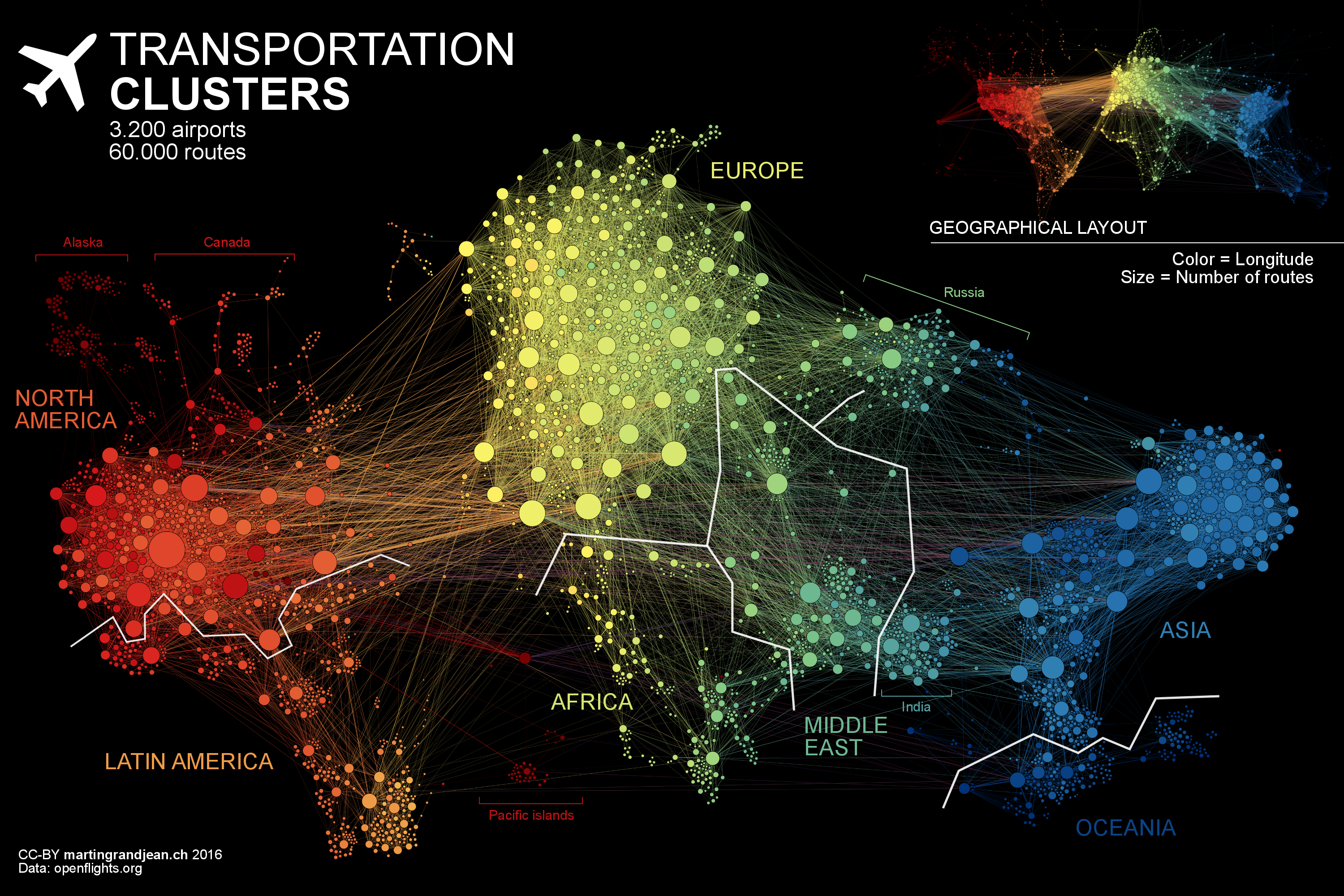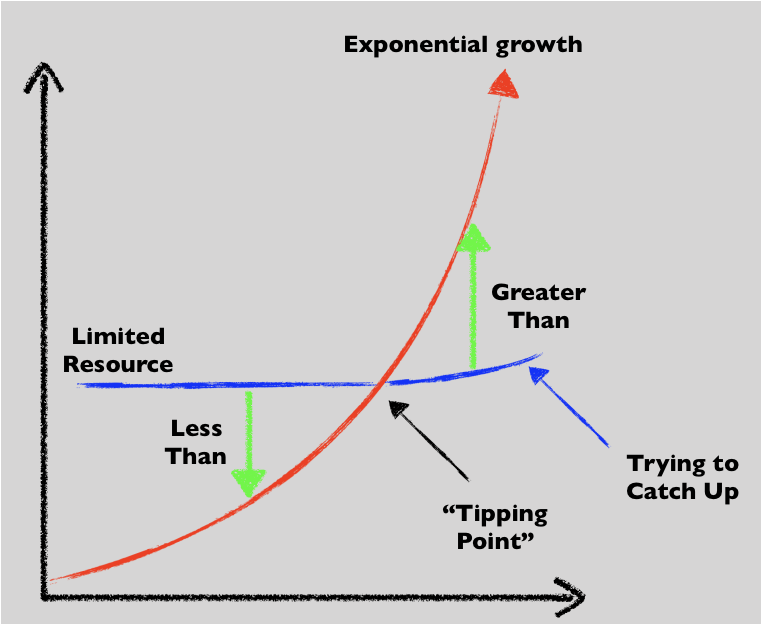The COVID-19 Infodemic: Adjusting sails to the winds
Spread knowledge, not fear

Cover Photo by jplenio from Pixabay
The more I think about language, the more it amazes me that people ever understand each other at all. –Kurt Gödel
It’s been about 4 weeks since my first post about the COVID-19 Infodemic. The number of confirmed cases worldwide has increased 4-fold. Disinformation and misinformation are getting harder to detect[8]. Statistics have become a tool for rhetoric. Many narratives make up their conclusions by cherry-picking outcomes then working backwards.
An information vacuum may worsen our sense of helplessness and abandonment. It gives fertile ground for rumors and conspiracy theories. An adequate appreciation of uncertainty is a compass to lead through the smoke of doubt. With a grip on reality, the striking question now is: What are we heading towards?
My opinions here should not be inferred or considered as medical advice. For medical advice, please refer to some official source like the Ministry of Health.
Table of Contents
- My compass
- Decision making under uncertainty (cont.)
- Human species in the eye of a virus
- The North pole of the compass
- Extraordinary interventions
- What we see and what we don’t see
- Reference for curious minds
My compass
Programming was my trick to keep anxiety at bay. Building and reverse-engineering a system gave me a sense of control. It was a nerdy hobby when I was young. Now it has become an indispensable tool for me to understand what is happening.
A reminder before I start telling you my thoughts. I’m dumb relative to what I need to know about the pandemic.
COVID-19 disease is an event of irreversible ruins or infinite cost options. The possibility of irreversible ruin calls for the role of risk in our decision making. Precautionary principles ward us off. They adjust our choices of action so that ruin is not a possible outcome.
Furthermore, the harm from the epidemic is systemic and widespread. Under these conditions, we take actions based on analytical approaches, not empirical evidence. Lucky for us, such basic principles exist. At their core is a theoretical grasp of the harm. It hinges on probability theory without calculating probabilities. Power-law distributions or fat tails set out the relevant underlying probabilistic structure.
![Power-law distribution[3]. In fat-tailed domains of risk, harm comes from the largest single event. Insofar as the epidemic, a super-spreader event is a tail event. Image credit: Wikipedia](/img/2020/04/d35a7ccc.png)
Power-law distribution[3]. In fat-tailed domains of risk, harm comes from the largest single event. Insofar as the epidemic, a super-spreader event is a tail event. Image credit: Wikipedia
Why do all these probabilistic things matter? They put us in the best possible position for the future. They help us make vital inferences with little data. They tell us what we cannot predict with tools like Gauss or Log-normal distributions. These traditional tools can come into play only after losses become bounded. This happens when we can halt the growing complexity of the situation.
Beyond that, the paradigm buys us time to put in place interventions for the next challenge. How will we end the pandemic?
Decision making under uncertainty (cont.)
My experience with incident responses first came in 2011. That was a strange year. The Arab Spring led to a reschedule of the 2011 ACM ICPC World Finals. The organizers rushed to find an alternative venue in Orlando, Florida. It thereby brought me to the US for the first time. Then the Fukushima Daiichi nuclear disaster happened in March. While in September, I landed in Japan to pursue a post-graduate program. Months after the disaster, friends still warned me about the invisible threat: radiation.
At present, we are facing yet another invisible threat: the coronavirus. Decision-making under uncertainty may be applicable for various situations in our daily life:
- Should I step into that elevator?
- Have I stocked up on enough food for the shelter-in-place period?
- Which type of mask should I wear?
Principle 3. Before updating the map, make sure that you still keep your foot on the ground. A negative feedback loop is crucial to adjust our mental models of the terrain. Failure to update primarily stems from three things. Lack of systemic perspectives, ego, and removing ourselves from consequences of the decisions.
Principle 4. Under deep uncertainty, take action with more gain than pain. Wherever such asymmetry prevails, you will welcome uncertainty in the long term. Having options instead of an obligation to the end result frees us from predictions.
![Larger Gain than Pain from a random event. Start from the spot “You are here”. Move right on the horizontal axis. Gains are larger than losses confronted by moving left. Image credit: Antifragile[1]](/img/2020/04/36e80942.jpg)
Larger Gain than Pain from a random event. Start from the spot “You are here”. Move right on the horizontal axis. Gains are larger than losses confronted by moving left. Image credit: Antifragile[1]
We put on a seat belt, not because the car accident will certainly happen. We take that action because we don’t know if the accident will happen or not. In a similar vein, we wear masks early on, not because the disease is definitely airborne. We wear masks because we don’t know yet how infectious the virus is.
Another example is analyzing the trend of violence. We would need a lot more data to claim violence is decreasing than to claim it is increasing.
Risk is asymmetric. Mistake a stone for a bear rather than mistake a bear for a stone. Do no harm first.
Human species in the eye of a virus
A small world
In the eye of a virus, there are only 3 categories for the entire human population on Earth.
- Susceptible. Those it can infect.
- Infected. Those it has already infected.
- Recovered. Those it can no longer infect.
Besides, the virus travels as far as its host travels. While global connectivity is at an all-time high, our world is getting smaller. Human mobility manifests scaling laws such as power-law distribution. Without global transportation, there wouldn’t be a pandemic.
From the connectivity of the network, we see how the harm can propagate and whether the risk is systemic. This determines relevant parameters for our decisions.
The most relevant parameter to stop the spread of the virus is transportation. Travel restrictions are to control the spread over space. Early isolation of suspected cases is to control the spread over time.

The small-world network behind air transportation. Image credit: Martin Grandjean
A fragile world
During the epidemic, different people may suffer different degrees of susceptibility. Age and medical conditions are not the only criteria for susceptibility. Millions of people cannot withstand the situation due to social and financial conditions. At the other end of the scale, life is a constant struggle to get enough food.
Still, I’m not about to swing the balance by selecting either the economy or the public health. There is no fine line between them. Without a healthy population, how to have a healthy economy? Boosting demand works in a man-made recession, not in a recession with viral infection.
As for the economic effects from an epidemic, buffers and action timing matter. An ounce of prevention is worth a pound of cure. The hardest-hit regions seem to be managed without buffers and react too late.
When an outbreak occurs, the cost of material rises from shortages. Even if the spread is slowing down, this cost can keep rising in a non-linear manner. Likewise, natural disasters are getting more expensive over time under tighter supply chains. A low stockpile of necessities is a recipe for catastrophe.
Frame the situation as reopening a healthy life instead of merely the economy. It enables more holistic and humane options to reduce the damage. It also brings us a rare opportunity to re-imagine what a livable society might look like.

A tipping point for phase change in complex systems. Once we hit it, things will shift rapidly. Since then, a linear solution can hardly keep up with an exponential process. Image credit: @yaneerbaryam
The North pole of the compass
Most of the coronavirus’s biology is still a mystery to us. So is our world. Real-world entities like the economy or the virus’s biology are complex systems. When there are systemic risks in complex systems, getting bogged down in details can screw us up. From a broader view of these systems, there are certain large-scale behaviors. We can characterize such behaviors without examining all details[2].
For COVID-19, large-scale behaviors include:
- Exponential growth of infections until saturation
- Exponential decline in infections until elimination
Wishful thinking for the first behavior is about the herd immunity speculation. Wishful thinking for the second one is about some miracle cure. When sailing into a dangerous sea of icebergs, wishful thinking cannot save us from hits. A strong set of actions is our chance to turn the tide towards the second regime.
Social distancing works. Image credit: Andy Nick and crew at Real Art
At the moment, lockdown and social distancing measures are implemented worldwide. We have seen infection decline in some regions. Will the decline remain stable? Or will a resurgence come after we lift the measures?
The large-scale behaviors give us a clue. Whether an elimination is stable depends on[5]:
- Travel rate between regions. A region can be as large as a geographic territory, or as small as a household.
- Speed at which a region takes action to reduce the travel rate when it is infected or re-infected. South Korea has been a role model for the ability to take a wide range of actions at high speed[7].
Only regions with active spread need aggressive social distancing measures. Lockdown is a last resort. It’s unnecessary to use a sledgehammer to crack a nut. In stable regions, multi-scale approaches should be put in place. Community self-monitoring, local and speedy tests, social behavior change.
These actions amount to an analogue of building system resilience. They play the roles of fail-safe protocols, circuit breakers, and backups. Without enough resilience to survive random stresses, we are playing Russian Roulette.
Recently, many regions have tried to push the Reproductive Ratio to a specific value of less than 1. The bottom line is that we cannot use this number in a sense of control. It’s a fat-tailed variable due to the presence of super-spreader events. The ratio thereby takes longer to converge.
Two steps to contain the spread in a region. First, having strong enough interventions to create an exponential decline. Second, keeping those interventions in place for a long enough time. Social incentives may help sustain this step. Whether there will be new waves of infections is up to our behavior. Rather than playing Russian Roulette with blind beliefs, play Whack-a-mole with the virus.

Whack-a-mole. Image credit: Fede Cook
Extraordinary interventions
There are no silver bullets to find effective interventions. Many facets and factors are linked to the situation. A feature of complex systems is that leverage points often exist. They are points of power. A small change in one thing can bring big changes in everything. Washing hands and wearing masks look like two examples of leverage points. Easy for individuals, big leaps for the collective. Yet one intervention is not enough to contain the pandemic. Travel restrictions must be set up along with other measures.
Taiwan’s response to COVID-19 impresses me with a coherence of collective action. They used the language and spirit of fighting a war. With that mindset came extreme policies and great innovations. Their information-sharing strategy is ingenious:
- A real-time map of local mask supplies
- Citywide alert for risky locations visited by Diamond Princess passengers
- A crowdsourced website to dispel misinformation
- Integration of health and immigration databases to track travelers with COVID-19 symptoms
- Name-based rationing system for face masks
In particular, for 5 weeks (Jan 20-Feb 24), they took at least 124 action items[6]. Given my limited perception as an outsider, the list of actions herein is not exhaustive. Much to my surprise, most of these actions started even before Wuhan shut down.
| Intervention target | Descriptions | Number of action items and their start dates |
|---|---|---|
| Border control, travel restrictions, and case finding | Control transportation from the air and sea. Test proactively. Identify cases with new technology. Quarantine of suspicious cases with punishments. | 68 action itemssince Dec 31, 2019 |
| Resource allocation | Ban export of surgical masks. Increase production of face masks and sanitizers. Take over the production and distribution of medical-grade masks. Devise a system for distributing rationed masks. | 33 action items since Jan 22, 2020 |
| Communication and politics | Daily briefings to keep the public informed. Set high penalties to fight fake news. Compensate hard-hit local businesses (NT$ 40.4 billion). Subsidize medical workers, quarantine residents and healthcare system(NT$ 19.6 billion). | 13 action itemssince Jan 22, 2020 |
In light of a pandemic, the impact of interventions relies on how the infection curve is going. On the way up, it requires coarse-grained actions like travel restrictions. On the way down, fine-grained actions like contact tracing will work.
What we see and what we don’t see
Being aware of our innate biases is a constant message throughout my discussions. I admit my own bias: I’m an optimist, and not a dreamer. Is this the last pandemic of our era? No.
Given that we have collected N data points of epidemics in the last century. The chance, by which a more severe epidemic than all those will happen, is about 1/N. This probability is independent from the shape of the distribution we are looking at[4].
I’m writing this piece while listening to One World: Together At Home, and hope for the best. I’m afraid of catastrophes the pandemic may bring. On the other side of the coin, I’m also afraid the fear will pass without leaving any trail of change in our behaviors.
Our actions in the present shape the future.
Reference for curious minds
To keep this post concise, I will only leave here enough keywords and critical studies. You can follow their citations and data sources to glean your own big picture.
Complex system analysis
[1] Taleb, N. N. (2014). Antifragile: Things That Gain from Disorder (Reprint edition). Random House Trade Paperbacks. [2] Bar-Yam, Y. (2016). From Big Data To Important Information. ArXiv:1604.00976 [Nlin, Physics:Physics, q-Bio, q-Fin]. http://arxiv.org/abs/1604.00976
Fat tail risk
[3] Power Laws: How Nonlinear Relationships Amplify Results. (2017, November 6). Farnam Street. https://fs.blog/2017/11/power-laws/ [4] Taleb, N. N. (n.d.). What You See and What You Don’t See: The Hidden Moments of a Probability Distribution. 3. [5] Siegenfeld, A. F., & Bar-Yam, Y. (2020). Eliminating COVID-19: A Community-based Analysis. ArXiv:2003.10086 [q-Bio]. http://arxiv.org/abs/2003.10086
COVID-19 datasets
[6] Wang, C. J., Ng, C. Y., & Brook, R. H. (2020). Response to COVID-19 in Taiwan: Big Data Analytics, New Technology, and Proactive Testing. JAMA. https://doi.org/10.1001/jama.2020.3151 [7] Flattening the curve on COVID-19 in Korea. (2020). The Government of the Republic of Korea. http://www.korea.kr/common/download.do?fileId=190536078&tblKey=GMN [8] COVID19 Infodemics Observatory. (n.d.). Retrieved April 8, 2020, from http://covid19obs.fbk.eu




